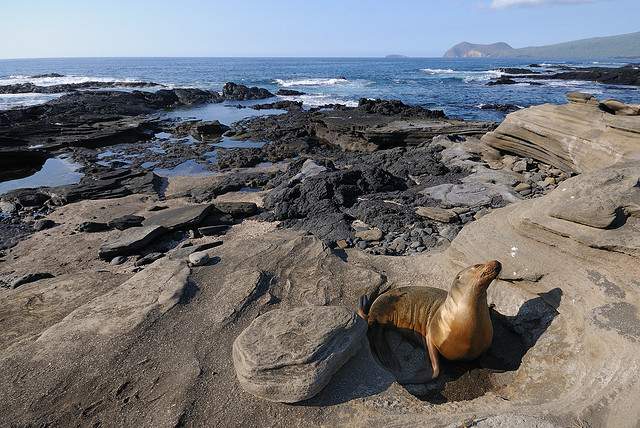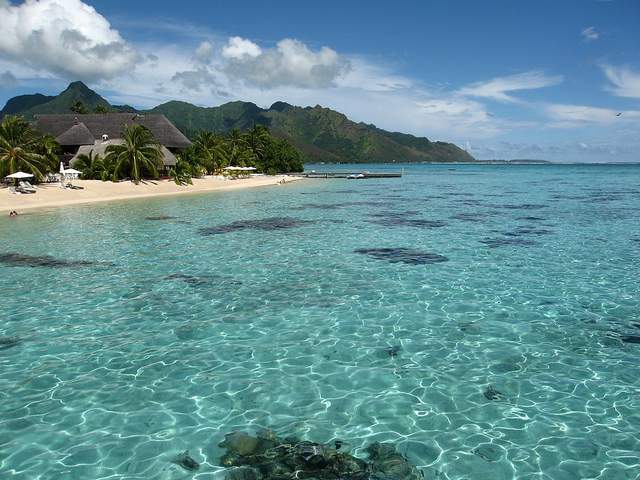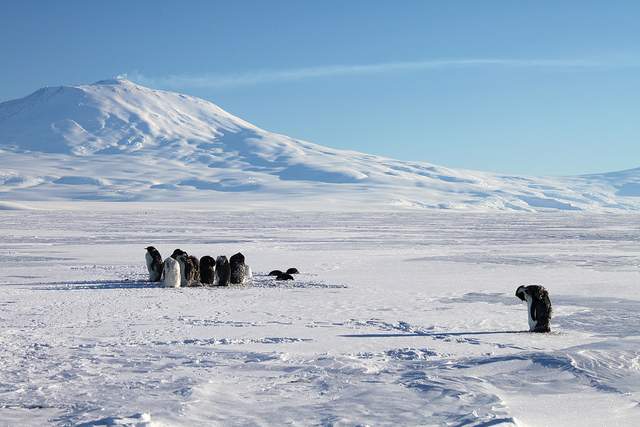Ever dreamed of jet-setting off to the farthest corners of the Earth to find beauty, romance and adventure…and then actually crunched the numbers?
Taking the trip of a lifetime can be not only daunting to plan but afford, as well. Several of the world’s most coveted destinations are extremely expensive, either to boost their own exclusive reputations or to protect delicate ecosystems from overexposure to human beings and fossil fuels. Additionally, in many of the world’s most coveted places, resources like food and water must be brought in to accommodate tourists.
However, sometimes there are less costly ways to experience a luxurious destination — like staying in unique, locally-run lodgings or volunteering to earn your keep, to name but a few.
Here are some exciting ways to save money on your own trip of a lifetime:
The Galapagos
Made famous by Charles Darwin’s 1835 geological and biological observations, this group of isolated volcanic islands (which lie about 600 miles west off the coast of Ecuador) attract about 160,000 visitors every year. As one of the world’s most significant sources of biodiversity, the Galapagos offer a unique travel opportunity: More than 1,300 species here are found nowhere else.
Keeping prices down aren’t a big priority here, largely due to fears of ruining the natural balance in such a special part of the Earth. While the islands have been downgraded from UNESCO’s “World Heritage Sites in Danger” list, there are still concerns about the growing travel industry and ripple-effect of population growth here, especially on the islands of Baltra, San Cristóbal and Isabela, which all feature small airports.
LUXURY: Small-group, naturalist-guided cruises are the main attraction here, generally designed to appeal to wealthy, educated travelers; with an average sailing price of $7,000 per person, there are few bargains to be found. Two additional costs to factor in will be your flights from Quito on the Ecuadorean mainland — between $365-$425 per person, each way – and a $100 per-person national park fee.
LESS: Try local tour company Galapagos Alternative, which includes multi-day, multi-island hotel stays, water and land excursions, and some meals for groups of 2-7 people for approximately $950-1600 per person. Or, book one of the Finch Bay Eco Hotel‘s all-inclusive Naturalist Packages and explore the islands via day trips for about $1,140-$2,500 per person. If f a volunteer effort is more your speed, ProWorld offers a $1,345 per week program where you can help to weed out non-native plant species on San Cristóbal. A 5-day independent Galapagos trip from Intrepid Travel starts at $1735 per person.
>> Check out more Galapagos tour options and read about the world’s best wildlife experiences
French Polynesia
Widely considered one of the most luxurious destinations on Earth, this largely French-speaking region of the South Pacific is made up of six groups of islands, most notably the Marquesas and Society Islands. The latter, so named by British explorer Captain James Cook for their “sociable” proximity to one another, includes the famous Tahiti and Bora Bora.
Low season is something of a theoretical construct in this popular honeymoon/family travel destination. However, due to rain, humidity and school year schedules, prices take a bit of a dip between mid-November and the third week in December, then again from January 5 through the month of March. Keeping in mind that low-season rates here are often more costly than high-season rates in the Caribbean, keep in mind that late March offers the best low-season weather in French Polynesia.
LUXURY: As the birthplace of the overwater bungalow concept, some of the world’s most expensive high-end resorts — at an average of $1,000 per night — can be found in this region (e.g., Le Méridien, St. Regis,InterContinental, Four Seasons and more).
LESS: If you’re prepared to skip Tahiti and Bora Bora, you’ll see similarly stunning landscapes at a huge discount. Consider staying in a traditional round bungalow (called a fare) right on the beach at a smaller resort like Moorea Fare Miti for approximately $200 per night. Or, shoot for even greater savings by choosing a home stay or pensione in other island groups within French Polynesia, like the Leeward, Marquesas and Windward Islands.
>> Find flights to Tahiti and check out the best overwater bungalows around the world
African safaris
The most popular countries in Africa for wildlife safaris are Botswana, South Africa, Tanzania and Kenya, and millions of visitors flock here every year. The well-worn tourist paths here include the Okavango Delta, Kruger National Park, Ngorongoro Crater and the Serengeti.
Most safari outfitters offer two 4-hour game drives per day, and you’re assigned one guide for each camp or lodge during your stay; that guide’s zoological knowledge, safety skills and personality have a special power to make or break your travel experience. For this reason in particular, choosing a well-vetted tour company is of tremendous importance in Africa (National Geographic Traveler is an excellent resource), but a reputable outfitter often requires a large financial investment.
While tour packages can offer a bit of a price break here and there, most reputable safari outfitters have little incentive to offer serious discounts. Protected areas are either privately owned or government-managed, and often run at great expense; staying near national parks and game preserves generally requires even the simplest tourist resources to be brought in from more populated areas (either by truck, plane, or both), and national park fees tend to be $200 per vehicle and more.
LUXURY: A two-week luxury safari in these regions averages a whopping $17,000 per person. (In addition, airfares from North America and Europe to hubs like Johannesburg and Nairobi hover around $1100 per person…for coach seats.) Included in your trip will generally be access to a linked network of safari camps, each with a rigorously-trained guide, gorgeous food and lodgings, special touches like candle-lit dinners in the bush, unique land and water excursions, sunset cocktails every day, and a personal agent to advise you of what to bring and expect, as well as to make all charter flight and land transportation arrangements.
LESS: Rather than booking your safari ahead of your trip, you can save several thousand dollars by winging it to Gabarone, Johannesburg, Nairobi or Arusha, heading to the airport’s tourist desk, booking modest local lodgings and enlisting the day-excursion services of a local safari outfitter. (Note: In order to travel safely and wisely, this plan necessitates a bit of outfitter-vetting research while still at home.) Or, consider traveling overland in a small group with a budget/camping outfitter like Absolute Africa, which averages $250 per day, including most meals. Intrepid Travel’s three-day Kruger adventure costs $475 per person, or on the lowest end of the budget, you could camp in a national park like Kruger, driving yourself around the park each day
You could also head off the beaten safari track altogether by visiting small, less popular national parks in Tanzania (which has 25 from which to choose) with local guides; seeking out gorillas in still-rebounding Rwanda; or exploring beautiful Gabon, where 10% of the country is set aside for land and wildlife preservation. In all these areas you’ll find fewer tourists and lower prices.
>> Learn more about doing a self-drive safari in Kruger or find the cheapest places to go on safari in Africa
Riviera Maya
The sparkling northeastern coast of Mexico has boomed in the last decade, remaining popular with tourists even despite persistent (and often-overblown reports) of gang violence in the tourist hub of Cancun and, frankly, entirely unrelated parts of the country. Centered around coastal Highway 307 in the Mexican state of Quintana Roo, the Mayan Riviera lies along a 100 km swath of the Yucatán Peninsula in four main tourist areas: Playa del Carmen, Puerto Aventuras, Tulum and Akumal.
Most acclaimed for its warm Caribbean waters and white-sand beaches, regional attractions include the northern tip of the world’s second-longest barrier reef (after Australia’s), with amazing opportunities for snorkeling and scuba diving; sacred sinkholes called cenotes; and Mayan archeological treasures like Chichén Itzá, Tulum and Cobá. However, it’s also home to eastern Mexico’s fanciest shopping opportunities and elaborate water/resort parks like Xcaret.
Along the Riviera Maya, the only month that offers both decent (read: relatively dry, breezy and non-humid) weather and low-season prices is November.
LUXURY: High-end resorts are increasingly a mainstay in this part of Mexico (e.g. Zoëtry Paraiso, Secrets Maroma Beach, The Tides Riviera Maya, etc.), and per-night prices average $800. In Cancun and Playa del Carmen, you’ll pay as much as half the price (still a bundle) at sweeping high-rises like the Ritz-Carlton and Gran Melia Cancun, but the Riviera’s main attractions are approximately 20-30 km away. Near Chichén Itzá, a 2 1/2-hour drive from Cancun, hacienda-style rooms within the park-like grounds of the historic Mayaland resort collection cost between $200-400 per night, plus meals.
LESS: Skip Cancun and Playa del Carmen altogether. The first is a concrete-paved city full of big-chain hotels and shopping malls with, in many places, rapidly-eroding ribbons of sand; the second is a magnet for cruise ship day-trippers who flood the still-struggling-to-be-sleepy downtown shopping district with tacky fashions and bus-tour diesel fumes.
Head instead to quiet Isla Mujeres, an inexpensive and half-hour public boat ride from Cancun, where the only vehicles allowed are golf carts and bicycles. The equally clear water is the Atlantic on one side, the Caribbean on the other, and there are several small, locally-run, beachfront hotelitos where prices tend more towards $65-100 per night. To boot, you’re walking distance from frondy palapa bars on the sand, a bevy of fresh seafood restaurants and, across the island, the touristy but exciting snorkeling preserve at Xel Ha.
To be closer to Chichén Itzá, cenotes and caves, seek out the rustic Dolores Alba Chichén, which has comfortable (and air-conditioned) rooms and a huge reef-bottom swimming pool for $39-55. Use this as your base for exploring other ruins in the area, or add a couple of nights at the Villas Arqueologicas at Cobá, a palm-fringed stucco sprawl centered on a pool plaza and set beside a shimmering lake full of alligators. Spacious rooms here average $50 per night; a full meal plan adds a daily charge of about $30, not a bad idea in this remote stretch of the Yucatán.
>> Book flights to Mexico, read more about resorts in Mexico and learn about eco-adventures in Mexico
Antarctica
Not discovered until 1820 and highly protected from industrial and mining interests, Earth’s southernmost continent is dry, cold windy and generally inhospitable to human beings. It’s also isolated in the extreme: It’s 600 miles from the southern tip of South America, and 1,500 miles across the Southern Ocean from Australia’s Kangaroo Island. While there are no permanent residents on Antarctica, there are generally 1,500 to 3,000 scientists and researchers on the continent at any one time, studying everything from glaciers to weather and wildlife.
Maybe it’s all of these factors – or maybe it’s the penguins – but Antarctica has become nearly irresistible to travelers with an adventurous spirit.
LUXURY: There are no hotels on Antarctica, but there is one campsite that serves both researchers and travelers. Run by Adventure Network International, the Patriot Hills campsite comes equipped with an adjacent airplane runway and a whole slew of educational/adventure programs like skiing to the South Pole, climbing mountains at Vinson Massif and more — many of which average a whopping $35,000 per person.
Cruises are the most common means of visiting Antarctica, and at an average cost of $15,000 per person, they tend to be some of the most expensive in the world. Most cruises to the region feature onboard wildlife experts and small-group excursions like Zodiac exploration and sea kayaking amongst glaciers.
In Ushuaia, the southernmost town in Argentina, a couple of high-end resorts (Los Cauquenes and Las Hayas) serve as relaxing points of departure and return for most cruises.
LESS: Still expensive, but less than the luxury option, Antarctic Peninsula Basecamp Cruise allows passengers to get off the ship and camp on the frozen tundra. Campers are provided with all the necessary gear and have lots of time for hiking, kayaking, snowshoeing, and glacier walking. February and March departures for 2012 start at $8,350 per person.
While there are a few relative other bargains to be found (e.g.,approximately $4,000 per person on Antarpply’s Ushuaia and with Quark Expeditions), the least expensive “cruises” to Antarctica are generally on frills-free research ships. Consult a website called PolarTrec to learn more about teaching and research work in Antarctica and bravely submit your own application.
>> Read more about choosing the right Antarctic cruise for you or check out more Antarctic adventure trips
Read more abut luxury travel – and how to do it for less:
- 5 Ways to Score Luxury Travel Deals
- Five Shoulder Seasons Around the World
- How to Make the Most of Your Summer Travel Budget
- The World’s Most Expensive Hotels
- The Most Romantic Bed and Breakfasts in the US
Photos by: Scott Ableman, Norman Allen, travelswithtwo, Javier Hidalgo, elisfanclub




